Ardfert Abbey
Houses within 15km of this house
Displaying 70 houses.
Houses within 15km of Ardfert Abbey
Displaying 70 houses.
| House name | Description | |
|---|---|---|
| Bunow Mill | John Palmer was leasing a property, including a flour mill, valued at £51 from the estate of Olivia Donovan at the time of Griffith's Valuation. | |
| Garrahies | At the time of Griffith’s Valuation, this property, valued at £11, was being leased by Edward Day to Francis Fitzgerald. In 1837 Lewis records it as the seat of F. Fitzgerald. Bary states that it remained in the Fitzgerald family until the 1930s. It was still extant in the late twentieth century. | |
| Knockglass | Edward F. Day was leasing this property to Ursula Rae at the time of Griffith’s Valuation, when it was valued at £11. Lewis refers to it as the home of Mrs. Rae in 1837. Bary states that it later passed by marriage to the McIntosh family but that the house is now ruinous. | |
| Mount St. Annagh | St. John Mason was leasing this property to Johanna O'Connor at the time of Griffith's Valuation, when the house, valued at £3 10s, stood on 800 acres. Johanna O'Connor was one of the principal lessors in the parish of Annagh at that time. The original house is no longer extant. | |
| Caherwisheen | Robert A. Thompson was in possession of this property at the time of Griffith's Valuation, when it was valued at £15. | |
| Ballyard House | At the time of Griffith's Valuation, Francis Crosbie was leasing Ballyard House from Reverend Arthur Rowan, when it was valued at £35. The Colthurst Estate sale notice of 1856 notes that Thompson leased the property from Nicholas Colthurst in the 1820s and that A.B. Rowan was an assignee of Thompson. Bary states that this house was possibly re-modelled by Peter Thompson in the late 1820s. |

|
| Ballyard | The representatives of Peter Foley were leasing a property at Ballyard to Margaret Crosbie at the time of Griffith's Valuation, when it was valued at £30. Lewis records Ballard as the seat of Francis Crosbie in 1837. | |
| Ballyard B | Geoffrey Eager was leasing a property to Patrick Ryan at the time of Griffith's Valuation, when it was valued at £15. | |
| West Villa or West Lodge | Edward Mulchinock was leasing this property from Sir George Colthurst at the time of Griffith's Valuation when it was valued at £15. Bary writes that this is the house associated with William Mulchinock, the writer of the famous song "The Rose of Tralee". It is still extant and occupied. | |
| Cloghane Lodge or Fortlands | At the time of Griffith's Valuation, it was being leased by Francis Fitzgerald to Andrew Shea and was valued at £15. It is still extant. Bary writes that this house was built by the Conway family, possibly in the seventeenth century. It was eventually sold by Nicholas Conway Colthurst to Peter Thompson in the 1820s. The 1856 sale notice records Francis Fitzgerald as the assignee of Peter Thompson. | |
| Cloghers House | In 1786 Wilson refers to Cloghers as the seat of Richard Yielding. John Mulchinock was leasing two adjoining properties from the Colthurst estate at the time of Griffith's Valuation, one valued at £50 and the second at £15. The Irish Tourist Association Survey notes that Cloghers was "once the home of the Mulchinock family who were big landowners" and relates the story of the song "the Rose of Tralee". Bary writes that this property was associated with the Carrigue family in the eighteenth century and also that John Mulchinock was an uncle of William Mulchinock, author of the song. She indicates that it was later owned by the Fitzmaurice family. It is still extant. |
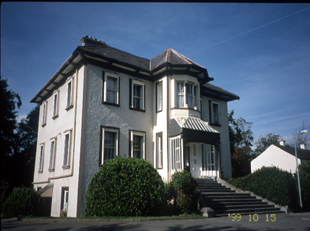
|
| Belmont | Reverend Arthur Rowan was leasing Belmont from Arthur Chute at the time of Griffith's Valuation, when it was valued at £40. Lewis records it as the seat of Reverend A.B. Rowan in 1837. The Ordnance Survey Name Books suggest the house was built by his father in 1826 and cost £1500. However, Bary states that the house, in common with other houses in the vicinity, was built by Peter Thompson in the 1820s, when he was Treasurer of County Kerry. It is still extant and occupied. |
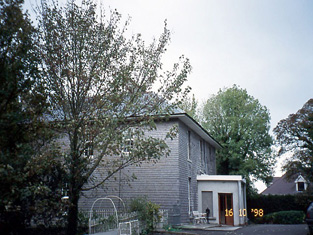
|
| Spring Lodge | Rev. Arthur Rowan was leasing this property to Robert Bell at the time of Griffith's Valuation, when it was valued at £15. Lewis records Spring Lodge as the residence of F.J. Martelli in 1837. Bary states that this is another of the houses built by Peter Thompson in the 1820s. Rowan was married to his daughter Alicia and they lived at nearby Belmont. Spring Lodge is still extant. | |
| Lohercannon House | Catherine Day was leasing this property to Richard Murphy at the time of Griffith's Valuation when it was valued at £15. In 1786 Wilson refers to "Lower-cannon" as "formerly the seat of Rev. Mr. Day, accidentally destroyed by fire". The Ordnance Survey Name Books describe it as the seat of Edward Orpen but originally built by the Day family. Lohercannan is referred to in the Irish Tourist Association Survey of the 1940s as "another building that would be worht a visit".The second house also seems to have been held by the Days but leased out to other families including the Morrises and Eagers. It was demolished to make way for housing in the 1960s. | |
| Ballyroe Lodge | Sir Edward Denny was leasing this property to Pierce Chute at the time of Griffith's Valuation when it was valued at £17 15s. Bary writes that it was built by Pierce Chute, possibly in 1836, according to O'Donovan. The Chutes continued in residence until the late nineteenth century after which it had a succession of owners. It now forms part of the Ballyroe Heights Hotel complex. |
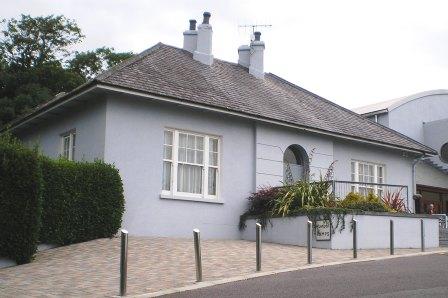
|
| Barrow House | Sir Edward Denny was leasing Barrow House to John Collis at the time of Griffith's Valuation when it was valued at £20 10s. In 1837 Lewis mentions Barra [sic] as the seat of T. Collis. In the 1830s, the Ordnance Survey Name Books indicate it was the residence of John Collis, having been built about two centuries previously. Leet noted it as the seat of John Collis in 1814. Bary states that the house was built by a William Collis, a Cromwellian officer, and continued to be associated with the Collis family until latter half of the nineteenth century. In the 1990s it was a restaurant and guesthouse but has now reverted to private ownership. |
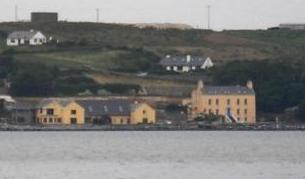
|
| Listrim House | Sir Edward Denny was leasing Listrim House to Robert Fortune at the time of Griffith's Valuation, when it was valued at £12 10s. In the 1830s the Ordnance Survey Name Books record that it was the residence of Henry Oliver by whom it was supposedly erected in 1836. It is now a ruin. | |
| Lisadale Lodge | John Busteed was leasing Lisadale Lodge from William Howard at the time of Griffith's Valuation, when it was valued at £6 10s. The Ordnance Survey Name Books record it as the residence of William Howard, by whom it was supposedly built, in 1836. Bary writes that the house may have been a hunting lodge. It is now ruinous. | |
| Chute Hall | Richard Chute was occupying Chute Hall at the time of Griffith's Valuation, when it was valued at £37 10s. Lewis also records it as his residence in 1837. The house is named "Tullygarran House" on the 1st edition of the Ordnance Survey map and is so described in the Ordnance Survey Name Books where it is noted it was "three stories high and about a century old". The house later became known as Chute Hall. Bary notes that the Chutes had been resident in this area since the seventeenth century on what had been McElligott land. In 1894 it was the residence of Mrs. Chute. Richard, the last of the Chutes to live here, died in 1936. In 1943 the Irish Tourist Association Survey noted Chute Hall "now almost a wreck but once a fine imposing structure." The house has been demolished but the substantial gateway remains inside which are some fine ogham stones. |

|
| Rathanny House | Elizabeth Rowan was leasing a property to Patrick Holohan at the time of Griffith's Valuation, when it was valued at almost £3. Lewis refers to Rathanny as the residence of Mrs. Rowan in 1837. In the 1830s the Ordnance Survey Name Books noted the house, built c.1730, as the residence of Mrs. Rowan In 1786 Wilson mentions Ratanny as the seat of Mr. Rowan. Bary states that the house was built by the Rowan family in the eighteenth century and lived in by them for much of the early nineteenth century. It was sold in the early twentieth century and is still extant and occupied. |
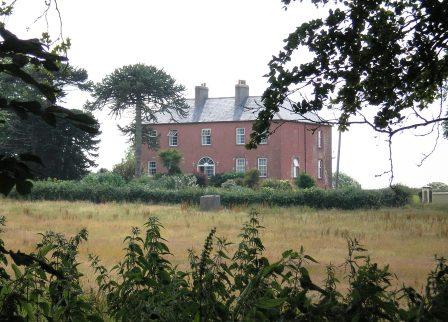
|
| Spring Hill | Richard Chute was leasing Spring Hill to Penelope Chute at the time of Griffith's Valuation, when it was valued at £23. Bary notes that Richard Chute enlarged and extended an existing house here in 1816. Lewis records the house as the seat of Captain Chute in 1837. The Ordnance Survey Name Books note that the original house was thatched but the house existing in the 1830s was "two stories high and neatly built". In the later nineteenth century, the Linden family, agents to the Chutes occupied Spring Hill and remained into the twentieth century. It is now ruined and overgrown. |
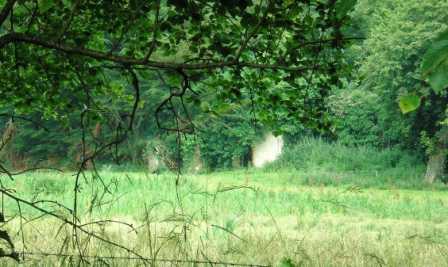
|
| Shanvally | Thomas Blennerhassett was leasing this property to Robert Conway Hurley at the time of Griffith's Valuation, when it was valued at £20. n the 1830s the Ordnance Survey Name Books describe it as the seat of Thomas Blennerhassett, who had built it in 1835. In 1786 Wilson had noted a seat of the Blennerhasset family close to the Rowan house, Ratanny. Bary states that Shanvally was built by the Blennerhassetts as a hunting lodge, possibly in the late eighteenth or early nineteenth century. It is still extant and occupied. | |
| Kilquane | Charles Blennerhassett was leasing this property to Thomas Rooney at the time of Griffith's Valuation, when it was valued at £3, on a farm of 130 acres. This may be the property to which Wilson refers as the seat of William Blennerhasset in 1786 which he names Elm-Grove. A substantial farm is extant at the site. | |
| Knockavinnane Cottage | James Hussey was leasing this property to Alexander Mason at the time of Griffith's Valuation, when it was valued at £15 15s. A portion of the original building is still extant. | |
| Ashgrove Mill | John Busteed and Arthur Rowan were the lessors of a house and mill at Tonreagh, vacant at the time of Griffith's Valuation, when the complex was valued at £25 15s. | |
| Ballygarran House | Sir Edward Denny was the lessor of Ballygarran at the time of Griffith's Valuation, when the property, valued at £9 10s, was vacant. In the 1830s, the Ordnance Survey Field Name Books mention Ballygarran House as the residence of William Hilliard by whose family it had been built in the eighteenth century. It is described as " an oblong low thatched house". Bary notes that it was a house frequently associated with the Hilliard and later the Fitzmaurice families. It was demolished in the mid-twentieth century. | |
| Lassinah | John Day Stokes was leasing this property from Sir Edward Denny at the time of Griffith's Valuation, when it was valued at £20 10s. Bary states that Major Stokes retired here from his Indian Army post and renovated the house where he lived until 1862. It remained in the Stokes family until the end of the nineteenth century and was recorded by Slater as the seat of Maj. Oliver R. Stokes in 1894. It is still extant but ruined. | |
| Kent Lodge | Richard O'Connell was leasing this property from the Denny estate at the time of Griffith's Valuation, when it was valued at £10 10s. Bary states that this house was attached to an earlier building known as O'Connell's Cottage where Rickard O'Connell lived but that Kent Lodge was built by William Collis. The house, which is still extant, remained in the Collis family until the early twentieth century. |
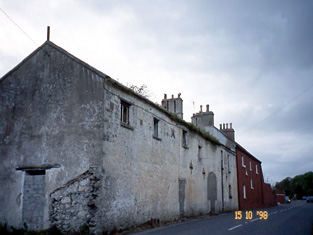
|
| Church Hill House | At the time of Griffith's Valuation, Rev. Henry Denny was leasing Church Hill from Sir Edward Denny when it was valued at £27. According to Bary the house was in the hands of the Denny family for much of the eighteenth and nineteenth centuries until it passed to the Neligans, possibly in the 1880s. In 1906 it was owned by William Neligan and valued at £27. It is still extant and occupied. |

|
| Ballycarty House | At the time of Griffith's Valuation, Charles Blennerhassett was leasing this property to Rev. Edward Nash, when it was valued at £19 5s. Bary states that it was occupied by the Nash family from the late eighteenth century and that it was destroyed in 1922. In 1786 Wilson notes the existence of the ruins of Ballycarty Castle, the property of Mr. Nash. | |
| Ballyseedy Castle | Ballyseedy was a seat of the Blennerhassett family for many generations. Charles Blennerhassett was occupying it at the time of Griffith's Valuation when it was valued at £60. Lewis recorded that Sir Edward Denny was living there in 1837 but that it was a seat of the Blennerhassett family. In 1906 it was owned by Arthur Blennerhassett and valued at £65. The National Inventory of Architectural Heritage (Buildings of Ireland) report states that the house was built c.1760 but renovated and extended at least twice in the nineteenth century. The Irish Tourist Association survey in 1942 reported that the owner then was Miss Hilda Blennerhassett. It remained in the ownership of the Blennerhassett family until later in the twentieth century when it was sold and became Ballyseedy Castle Hotel. [www.ballyseedecastle.com]. |

|
| Plover Hill House | Sir Edward Denny was leasing this property to George Gunn at the time of Griffith's Valuaton, when it was valued at £16 5s. Lewis records it as the seat of George Gun in 1837. Bary states that the house was built in the early nineteenth century by Barry-William Gun, whose mother was Arabella Denny. The Gunn family continued to own the property until the 1880s. Buildings still exist at the site. | |
| Frogmore | John McCartie or McCarthy was leasing this property from Sir Edward Denny at the time of Griffith's Valuation, when it was valued at £16. Lewis records Frogmore Lodge as the seat of Reverend Barry Denny in 1837.The Ordnance Survey Name Books reported that it was built by him in 1828 at a cost of £600 and was lived in, in 1840, by Mrs. Townsend Gunn. It is still extant. | |
| Curragh | William John Neligan was leasing this property from the Denny estate at the time of Griffith's Valuation, when it was valued at £8 10s. Bary indicates that the house has always been occupied by merchant families from Tralee. It is still extant. | |
| Keel House | Edward Rae was in possession of Keel House at the time of Griffith's Valuation. Lewis records it as the seat of Giles Rae in 1837. Bary states this was originally a Langford House, possibly built as far back as the 1680s but with later modificiations. Wilson refers to it as the seat of Mr. Langford in 1786. It passed by marriage to the Rae family with whom it remained until the twentieth century. It was sold but later re-purchased by the family and is still extant. |

|
| O'Brennan House | John Keane was leasing this property from Lord Ventry's estate at the time of Griffith's Valuation, when it was valued at £5 10s. Lewis records O'Brennan House as the seat of Edward Gorham in 1837. It is still extant. | |
| Glenduff House | Robert Conway Hurley was leaing this property to John Hurley at the time of Griffith's Valuation, when it was valued at £5 15s. In 1906 it was the property of John C. Hurley and valued at £10 15s. Bary writes that the Hurley family owned Bridge House in Tralee but also retained Glenduff House as their country estate. The house remained in the Hurley family until it was sold in the early twentieth century. It has been extensively renovated and is now a guesthouse. |
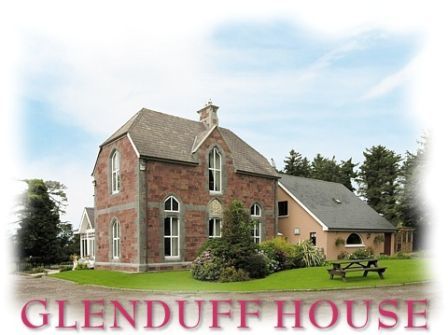
|
| Parkearagh | John Keane was leasing this property from Lord Ventry's estate at the time of Griffith's Valuation, when it was valued at £6. A substantial farm is extant at the site now. | |
| Doon House | At the time of Griffith's Valuation, William M. Hickson was in possession of this property, then valued at £9 15s. | |
| Oakpark or Collis-Sandes House | Maurice Sandes was in possession of this property at the time of Griffith's Valuation, when it was valued at £60. It is labelled as Oakpark on the 1st edition Ordnance Survey Map. In 1837 Lewis recorded Oakpark as the seat of John Bateman. Bary writes that, Killeen, the original house at this site, was a late seventeenth century house. It was followed by Oakpark, built by John Bateman in the 1820s. This is the house mentioned by Wilson in 1786 as the seat of Rowland Bateman. Maurice Sandes purchased the estate in the late 1840s and built the later Oakpark House c.1857. In 1906 this house was owned by Falkiner Sandes and valued at £112. The house was sold in 1922 and is now used as offices. |
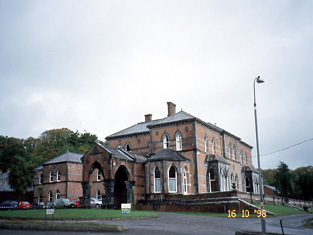
|
| Ballinorig House | At the time of Griffith's Valuation, Colthurst Bateman was leasing this property to Jonathon Walpole when it was valued at £14. The building is not labelled on the Ordnance Survey maps though a more substantial house exists at the site on the later 25-inch edition. Burke records that Colthurst Bateman resided in, and was, High Sheriff of Monmouth, in 1839. Ballinorig House is still extant. | |
| Ann's Villa [Oak Villa] | Thomas Payne was leasing this property from Sir Edward Denny's estate at the time of Griffith's Valuation, when it was valued at £30. The house is labelled Ann's Villa on the 1st edition Ordnance Survey map. A more substantial building, known as Oak Villa, appears on the 25-inch edition of the 1890s. Buildings are still extant at the site. | |
| Lee Brook | Francis Raymond was leasing this property to Richard Roland Chute at the time of Griffith's Valuation when it was valued at £30. In 1906 it was owned by Rowland Chute and valued at £30. Bary states that this house was associated with the Chute family and may have been built by them in the eighteenth century. It remained in the family until the 1930s and is still extant and occupied. The 25-inch edition Ordnance Survey map indicates an additional house in the townland, labelled Lee Brook House. A much enlarged version of this building now serves as Ballygarry House Hotel [Q866134]. | |
| Lismore | Edward Day Stokes was in possession of the house at Lismore at the time of Griffith's Valuation, when it was valued at £13 10s. Bary writes that the house was associated with the Martelli family who were related by marriage to the Blennerhassetts. Later it was occupied by Collis and Huggard families. It is now a ruin. | |
| Sackville House | William T. Crosbie was leasing this property to Sarah Heck at the time of Griffith's Valuation, when it was valued at £22 10s. Lewis records it as the property of the Crosbie family but resided in by Rev. R. Maunsell in 1837. Leet, in 1814, noted Sackville as the residence of John Saunders. In 1786, Wilson mentions Sackville " a very neat house, newly erected" as the seat of Rev. Thomas Graves, Dean of Ardfert. In 1906 it was the property of L.T. Crosbie and valued at £25. Bary states that Sackville was built by Thomas Graves, dean of Ardfert, in 1788, as there was no Glebe house there. It was named for Diana Sackville, wife of John Crosbie, second Earl of Glandore. It was leased by the Crosbies or lived in by one of the family for much of the nineteenth century. It was sold in the twentieth century and demolished in the 1950s. | |
| Tubrid House | George Gunn was leasing this property to Henry Hilliard at the time of Griffith's Valuation, when it was valued at £22 10s. Lewis recorded Tubrid as the seat of J. O'Connell.The Ordnance Survey Name Books indicate that this townland was owned by John O'Connell of Grenagh, Killarney and that John Sullivan of Tubrid was his agent in the 1830s. The house was occupied by Capt. Henry Hilliard at that time. In 1814, Leet noted the house as the seat of Townsend Gunn. Bary states that Tubrid House was built by the Crosbie family in the mid-eighteenth century and resided in by several generations of that family. The late eighteenth century owner, John G. Crosbie, was involved in a duel in which Sir Barry Denny was killed. A year later Crosbie himself died in mysterious circumstances. The house afterwards was owned by the Gunn and Hewson families. It is no longer extant. | |
| Ballyheige Castle | Pierce Crosbie was in possession of Ballyheige Castle at the time of Griffith's Valuation, when it was valued at £62 10s. Noted by Slater as the seat of Col. James Crosbie in 1894. In 1906 it was owned by James D. Crosbie and valued at £50. The Ordnance Survey Field Name Books describe the house as "a splendid and commodious building in the Gothic style" and record that the house was burned on the night of 14 November 1840. Bary writes that this had originally been the property of the Cantillons, some of whom later intermarried with the Crosbies. The original house on this site was constructed in the mid-eighteenth century but was renovated and enlarged to the design of Richard Morrison in the early nineteenth century. The building was used as a prison at the time of the War of Independence in the early 1920s and was subsequently burnt. Very little of the original remains but some renovation has taken place and there is holiday accommodation at the site, now surrounded by the Golf Course. |

|
| Ballyheige Glebe | The representatives of Pierce Crosbie were leasing this property to Reverend Thomas Heffernan at the time of Griffith's Valuation, when it was valued at £17 15s. In the 1830s, the Ordnance Survey Name Books describe it as "a good slated house, two stories high", then the residence of Reverend James P. Chute. A house is still extant at the site. | |
| Toanreagh | This house seems to have been constructed after the publication of the 1st edition Ordnance Survey Map but it appears on the 25-inch edition of the 1890s. Richard Oliver was leasing this property to Francis Creagh at the time of Griffith's Valuation, when it was valued at £9 10s. A house and substantial farm are still extant at the site. | |
| Ballynagare House | John Morrogh Bernard was leasing this property to George Gilbert (Senior) at the time of Griffith's Valuation, when it was valued at £6. In 1837, Lewis described it as the seat of the representatives of the late John Barnard. Leet had noted it as the seat of the latter in 1814. Bary indicates that the original house at this site has been demolished. | |
| Crotta House | Samuel Julian was in possession of this property at the time of Griffith's Valuation, when it was valued at £27. Lewis records it as the seat of T. Ponsonby in 1837 while Leet notes it as the residence of James O'Donnel in 1814. In 1786 Wilson writes that "Crotto" was the seat of James Carrigue Ponsonby and "very pleasantly situated with good plantations". Bary writes that Crotta had been built by the Ponsonby family and was later held on lease from the Court of Chancery by the Julian estate. At the sale of the latter estate in 1857, Crotta was described as being in the hands of the proprietor Samuel Julian. Later in the nineteenth century it was leased to the Kitchener family. Herbert Kitchener, later Earl of Khartoum, lived there as a boy. The estate was the property of the Browne family in the later nineteenth century but was offered for sale by Thomas Beale Browne in 1877. In 1894 Slater records it as the seat of Richard Savage. In the 1940s the Irish Tourist Association Survey describes it as " a ruined shell" where there was once "an imposing mansion". The remains of the house were demolished in the later twentieth century. |
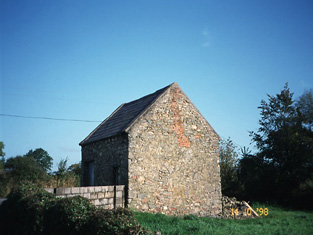
|
| Rea | William Talbot Crosbie's estate owned this property at the time of Griffith's Valuation, when it was valued at £5 15s. The original house is not extant now. | |
| Ballynoe House | William Stoughton was leasing this property to Catherine Pierce at the time of Griffith's Valuation, when it was valued at £21 15s. In 1837 Lewis refers to it as the seat of D. Pierce. Leets mentions it as the residence of Daniel Pearce in 1814. In 1906 it was owned by the representatives of Charles William Stoughton and was valued at £19. Bary writes that the Pierce or Pierse family were agents for the Stoughtons. The house is still extant and occupied. | |
| Banna House | Robert E. Stokes was leasing this property from the Earl of Listowel's estate at the time of Griffith's Valuation, when it was valued at £11. Bary writes that it was built by Oliver Stokes in 1815. It was demolished many years ago. | |
| Fortwilliam | Thomas B. Hurley was leasing this property from the Talbot-Crosbie estate at the time of Griffith's Valuation, when it was valued at £18 10s Lewis records the house in Killahan parish when he notes that it as belonging to the representatives of the late W. Collis in 1837. Leet states that William Fitzgerald was resident at Fortwilliam in 1814. . Bary writes that, according to O'Donovan, this house was built by William Collis in 1798. It is no longer extant. | |
| Corbally (Rattoo) | At the time of Griffith's Valuation, William Pope was leasing this property from the Trinity College Estates when it was valued at £6. A modern house, part of a large farming enterprise, exists at the site now. | |
| Bushmount | Wilson Gun was leasing this property to Dominick Rice at the time of Griffith's Valuation, when it was valued at £16 10s. In 1837 Lewis refers to it as the seat of Dominick Rice. In 1814 Leet had recorded Dominick Rice as resident at Ballymaquin. Bary states that Bushmount was possibly built in the early years of the nineteenth century by Dominick Rice. The house is still extant and occupied. | |
| Lisnagonee or Rattoo West | At the time of Griffith's Valuation, Wilson Gun was leasing this property to Thomas O'Connell, when it was valued at £13 5s. It is labelled Rattoo House on the 1st edition Ordnance Map but on the later 1890s Map it is named as Rattoo West. Bary states that this house is now known as Lisnagonee House. It was built by the Gun family, though the date is not clear, but probably in the eighteenth century. It is still extant and occupied. | |
| Fenit House or Fenit Lodge | Though this house was mostly associated with the Hurley family, at the time of Griffith's Valuation, it was in the possession of a Miss Locke, when it was valued at £20. It was being leased by John Murray. In 1906 it was owned by John C. Hurley and valued at £33. Bary notes that it later came into the Fuller family through marriage. It was sold in the 1970s but is still extant and occupied. |
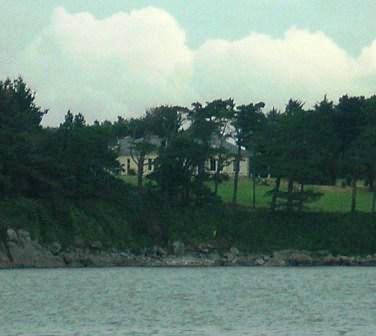
|
| Milford/Millview | Lewis refers to "Millview" as the seat of Kerry Supple in 1837. A house named Millford is shown in the parish of Rattoo on the 1st edition Ordnance Survey map, adjacent to a building labelled Millford Tuck Mill. The house is present on the 25-inch map of the 1890s but the mill is not labelled. At the time of Griffith's Valuation, Justice Rice held this property from the Provost and Fellows of Trinity College when it was valued at £2 15s. Bary writes that it burned down in the 1970s and is now a ruin. | |
| Drommartin | Lewis refers to Dromartin as the residence of J. Creagh in 1837. At the time of Griffith's Valuation, John Creagh was leasing this property from Richard Oliver when it was valued at £4. No house exists at this location now. | |
| Oyster Hall | Edward Denny was leasing this property to William J. Neligan at the time of Griffith's Valuation, when it was valued at £18 Lewis refers to it as the seat of Barry Collins while Oyster Lodge was the residence of Mr.Neligan in 1837. IIn the 1830s, the Ordnance Survey Field Name Books mention Oyster Hall as the seat of Daniel Supple but originally built by George Rowan in 1804. In 1814, Leet refers to Oyster Hall as the residence of George Rowan. Bary states that Oyster Hall was orginally built by the Rowans but was associated with the Neligans by the middle of the nineteenth century. It is no longer extant. | |
| Abbeylands | In 1906 L.T, Crosbie owned a property at Skrillagh, valued at £17. This townland also belonged to the Crosbie estate at the time of Griffith's Valuation, when it was let to the McElligott family. Bary states that the house, Abbeylands, was built in the 1870s as a residence for George Trench, agent to the Crosbie estate. In 1901 it was occupied by Ross Palmer and his family, JP for county Kerry and creamery owner. It was burnt in 1921 but restored later in the twentieth century and is now an ecumenical retreat centre. | |
| Glenfield House | In 1906 Major P. Chute owned a property at Ballygarret, barony of Corkaguiny, valued at £35 10s. At the time of Griffith's Valuation, this townland was in the possession of Nathaniel Bland. The house does not appear on the First Edition Ordnance Survery map but is labelled Glenfield House on the later 25-inch edition of the 1890s. In 1894 Slater noted it as the seat of Captain Thomas Chute. The original house is no longer extant. | |
| Mount Hawk | In 1906 Mounthawk was owned by Elizabeth Stokes and valued at £18 5s. The townland was in the possession of George Stokes at the time of Griffith's Valuation. Bary states that it was built by George Stokes on lands purchased from the McCarthy family and remained in the Stokes family well into the twentieth century. It was later used as a clubhouse by Tralee Golf Club. | |
| Tralee | At the time of Griffith's Valuation, Francis Crumpe was leasing a property, valued at £31, at Denny St., Tralee, from John Donovan. [Grid Reference is approximate]. | |
| Ballyhennessy | At the time of Griffith's Valuation, George Sandes was leasing this property from Mrs. S.C. Herrane, when it was valued at £5 and included an orchard. By the 1890s the 25-inch edition Ordnance Survey map indicates that the orchard was all but gone and the buildings were also altered. A substantial farm exists at the site now. | |
| Tralee Castle | In 1786 Wilson writes "at Tralee is a castle in tolerable preservation, formerly one of the castles of the Earls of Desmond, granted by Queen Elizabeth to Sir Anthony Denny, and now the seat of his descendent, Sir Barry Denny". In 1943 the Irish Tourist Association Survey mentions that the last reconstruction of the building occurred in 1802. Bary writes that, after the Act of Union, the Denny family spent more time in England and the castle fell out of use and was eventually demolished and the stones used for other buildings. | |
| Ballyhenry House | In 1786 Wilson refers to Ballyhenry as the seat of Mr. Hartnett. No house is named in this townland on the 1st edition Ordnance Survey Map. At the time of Griffith's Valuation the property is held by Michael Duggan leasing from the Hurley estate and the house is valued at £3 10s. Modern farm buildings exist at the site now. | |
| Old Court [Lixnaw House] | The Irish Tourist Association Survey refers to the "once magnificent mansion" of the Fitzmaurices, Earls of Kerry. By the 1940s only a few walls remained "supporting a henhouse and some turnip and potato pits". The survey also noted the survival of a summer house, a high circular mausoleum and a "hermitage". Bary notes that the property was home to the family for up to 500 years but fell into ruin in the later eighteenth century. It is labelled "Lixnaw House (in ruins)" on the 1st edtion Ordnance Survey map but as "Old Court" on the later 25-inch edition of the 1890s. Some ivy-covered ruins remain at the site. |
![Photo of Old Court [Lixnaw House]](https://landedestates.ie/storage/img/orig/2854.jpg)
|

